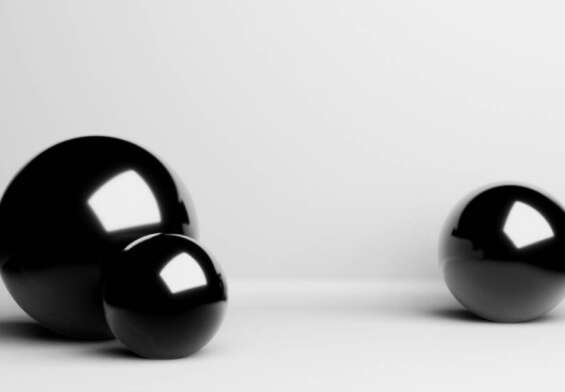
Why Do Men Have Nipples? Exploring the Science Behind It!
Hey there, fellow health enthusiasts! Are you curious about why men have nipples? Well, FitGAG is here to satisfy your thirst for knowledge. Join us as we dive deep into the fascinating world of nipples and explore the different theories that explain their existence. Get ready to have your mind blown with some incredible facts and dispel some common myths about nipples.
Why Do Men Have Nipples?
To understand why men have nipples, we first need to understand what nipples are and how they develop. Nipples are a type of mammary gland that are found on the breast, and they are responsible for producing and delivering milk to newborns during breastfeeding.
However, while nipples are essential for breastfeeding, men obviously do not have the ability to breastfeed, so why do they still have nipples? This is a question that has been asked for centuries, and there are several different explanations.
The Role of Nipples in Biology
Nipples play a crucial role in mammalian biology. They are a highly sensitive erogenous zone and can provide pleasure during sexual activity. Additionally, nipples can be an indicator of fertility and sexual maturity in women.
Beyond their role in sexuality, nipples also play a role in temperature regulation for both men and women. When it is cold outside, the nipples can become erect, which helps to conserve heat and keep the body warm.
Furthermore, nipples are a crucial part of mammalian embryonic development, and their formation is an important step in the development of the mammary gland. Nipple development is influenced by a combination of genetic and hormonal factors.
Now that we have a basic understanding of the role of nipples in biology, let’s delve deeper into the specific factors that contribute to the development of nipples in men and women.
Understanding Nipple Development
Now, let’s take a closer look at nipple development and explore the differences between men and women.
How Nipples Form in Embryos
Nipples form in embryos in a very similar way for both males and females. During fetal development, the mammary ridge, which runs from the armpit to the groin, begins to grow. This ridge contains specialized cells that will eventually form the mammary gland and the nipple.
As the embryo continues to develop, the nipple forms as a small projection on the surface of the breast. This projection is composed of a central duct, which will eventually become the milk duct, surrounded by layers of connective tissue and muscle fibers.
Differences in Nipple Development Between Men and Women
While the process of nipple development is very similar between males and females, there are some key differences. These differences are largely due to hormonal factors and genetics.
In females, the hormones estrogen and progesterone play a critical role in nipple development. During puberty, rising levels of these hormones cause the breast tissue to grow, and the nipples become more pronounced. Additionally, during pregnancy, these hormones stimulate the mammary gland to produce milk, which is delivered through the nipples during breastfeeding.
In males, nipple development is not typically influenced by hormonal factors to the same extent as in females. However, some men may experience nipple enlargement due to hormonal imbalances, such as increased levels of estrogen or prolactin.
Overall, while there are some differences in nipple development between men and women, the underlying biological process is very similar. The role of hormones and genetics is also important in understanding why men have nipples.
The Purpose of Nipples
In this section, we will explore the different purposes that nipples serve in human anatomy.
Nipples in Breastfeeding
One of the primary functions of nipples is to facilitate breastfeeding. In women, the mammary glands produce milk that is delivered through the nipples to the newborn infant. During breastfeeding, the baby latches onto the nipple and sucks the milk out through the milk ducts.
Breastfeeding has many health benefits for both the mother and the infant. For the baby, breast milk contains all the necessary nutrients and antibodies for healthy growth and development. It also reduces the risk of infections, allergies, and chronic diseases later in life. For the mother, breastfeeding can reduce the risk of breast and ovarian cancer and promote bonding with the infant.
Nipples as an Erogenous Zone
Another function of nipples is their role as an erogenous zone. The nipples are highly sensitive to touch and can provide pleasure during sexual activity. In fact, studies have shown that nipple stimulation can activate the same areas of the brain as genital stimulation.
Nipple stimulation can also play a role in female sexual response. The release of oxytocin, a hormone associated with sexual arousal and bonding, can be triggered by nipple stimulation.
However, it’s important to note that not all individuals find nipple stimulation pleasurable or arousing. It is a personal preference, and each individual’s experience may differ.
Overall, while nipples serve an important function in breastfeeding, they also have a significant role in sexual pleasure and arousal. In the next sections, we will explore the different explanations for why men have nipples, including the evolutionary, hormonal, and genetic perspectives.
The Evolutionary Explanation
In this section, we will explore the evolutionary perspective on why men have nipples.
The Origins of Nipples
Nipples are believed to have evolved in mammals as a way to provide nourishment to their young. Mammary glands, which produce milk, developed along with nipples as a way for mothers to feed their offspring.
The earliest known mammals, such as the platypus and echidna, do not have nipples. Instead, they secrete milk through glands in their skin. It is believed that nipples evolved in marsupials, such as kangaroos and opossums, and then later in placental mammals, such as humans and cows.
Why Nipples Persist in Men
So if nipples evolved for the purpose of breastfeeding, why do men have them? The answer lies in embryonic development.
In the early stages of embryonic development, all fetuses have the potential to develop either male or female characteristics. This means that both male and female fetuses develop nipples in the womb. However, once the sex of the fetus is determined, male fetuses begin to develop male genitalia and other male-specific characteristics, while the nipples remain.
Therefore, men have nipples simply because they are a developmental byproduct of the embryonic process. Nipples do not serve any essential function in men, but they do not harm them either.
Interestingly, while men’s nipples do not have a functional purpose, they can still be stimulated and provide pleasure. This suggests that the nipples may have served a sensory function in our evolutionary past, perhaps playing a role in mate selection or bonding between partners.
Overall, the evolutionary explanation for why men have nipples is that they are a remnant of embryonic development and do not serve any essential function in men’s biology. In the next section, we will explore the hormonal explanation for why men have nipples.
The Hormonal Explanation
When it comes to nipple development, hormones play a significant role. Both men and women have female hormones, such as estrogen and progesterone, in their bodies. However, men have higher levels of female hormones than one might expect, and this can impact the development of their nipples. Here are some key points to consider:
Hormonal Control of Nipple Development:
- Hormones, particularly estrogen and progesterone, control the growth and development of breast tissue in both men and women.
- Nipples are an extension of the breast tissue, and thus are also influenced by these hormones.
- During puberty, hormones cause the breast tissue in both males and females to develop, which includes the formation of nipples.
Why Men Have Higher Levels of Female Hormones:
- All humans produce estrogen and progesterone, including males, although they produce smaller amounts than females.
- Men produce more estrogen than progesterone, and this is important for bone health, sexual function, and other physiological processes.
- Some men may produce more estrogen than others due to differences in genetics or other factors.
- The amount of estrogen in a man’s body can also be influenced by environmental factors, such as diet and exposure to estrogen-like compounds in plastics or other products.
Overall, the hormonal explanation for why men have nipples comes down to the fact that hormones are responsible for nipple development in both sexes. The presence of female hormones in men, particularly estrogen, is necessary for proper physiological function, including the development of nipples. While hormonal imbalances or other factors may impact the amount of estrogen in a man’s body, the presence of nipples is a natural and necessary aspect of human anatomy.
The Genetic Explanation
Nipple development is largely controlled by genetics, with both men and women having the genetic blueprint for nipple development. However, there are some genetic differences between the sexes that help to explain why men have nipples.
Here are some key points to consider when exploring the genetic explanation for why men have nipples:
- The genetic code for nipple development is found on the X chromosome, which both men and women have.
- While the gene responsible for nipple development is present in both sexes, it is activated differently in men and women.
- In women, the gene is activated by the hormone estrogen during puberty, leading to the growth and development of the mammary gland and nipple.
- In men, the gene is not activated in the same way, resulting in the formation of nipples without the associated mammary tissue.
- However, men can still experience changes in their nipples due to fluctuations in hormone levels or other factors.
- Research has also identified several genetic variations associated with nipple size and shape, which may differ between men and women.
Understanding the genetic factors that contribute to nipple development can help shed light on why men have nipples despite not having the same functional purpose as women’s nipples.
Additionally, the role of gene expression in nipple development is a complex and ongoing area of research. Scientists continue to explore the mechanisms by which genes are turned on and off during development, as well as how external factors like hormones and environmental exposures can impact gene expression.
Overall, the genetic explanation for why men have nipples highlights the complexity of human anatomy and the ways in which biological processes are influenced by multiple factors.
The Medical Perspective
When it comes to nipple health, it’s important to be aware of any changes or abnormalities in their appearance or function. Here are some common medical conditions that can affect nipples:
- Inverted Nipples: This occurs when the nipple is pulled inward instead of protruding outward. It can make breastfeeding difficult, but it usually doesn’t cause any serious health problems.
- Nipple Discharge: This can be a sign of a few different conditions, including infection, hormonal changes, or even breast cancer. If you experience nipple discharge, it’s important to see a doctor.
- Mastitis: This is a painful inflammation of the breast tissue that can cause swelling, redness, and fever. It’s most commonly seen in breastfeeding women but can also affect men and women who aren’t breastfeeding.
- Paget’s Disease of the Nipple: This is a rare form of breast cancer that starts in the nipple and can spread to the surrounding tissue. It often presents as a scaly, red rash on the nipple and can be mistaken for other skin conditions.
It’s essential to perform regular self-exams to catch any potential issues early. Here are some tips for performing a nipple self-exam:
- Look for any changes in color or texture, such as redness or scaling.
- Check for any lumps or bumps in the breast tissue surrounding the nipple.
- Gently squeeze the nipple to check for discharge.
- Pay attention to any pain or discomfort in the nipple area.
If you notice any changes or abnormalities during a self-exam, it’s crucial to see a doctor right away. Early detection is key in treating many nipple-related medical conditions. Additionally, it’s recommended to see a doctor if you experience any persistent nipple pain, itching, or tenderness.
Being aware of common medical conditions affecting nipples and performing regular self-exams can help ensure good nipple health. Don’t hesitate to seek medical attention if you notice any changes or abnormalities.
Debunking Nipple Myths
As with many topics, myths and misconceptions abound when it comes to nipples. Here are some common myths and misconceptions about nipples, along with the truth behind them.
Common Misconceptions About Nipples
- Myth: Women’s nipples are more sensitive than men’s nipples.
- Truth: Both men and women can have sensitive nipples, and the degree of sensitivity can vary from person to person.
- Myth: Nipples can be permanently stretched out if they are played with too much.
- Truth: Nipples can become temporarily engorged or swollen from stimulation, but they will return to their normal size and shape once the stimulation stops.
- Myth: Nipple size and shape can determine a person’s ability to breastfeed.
- Truth: Nipple size and shape do not affect a person’s ability to breastfeed. In fact, most people are able to breastfeed regardless of their nipple size or shape.
- Myth: Nipple hair is abnormal or unhealthy.
- Truth: Nipple hair is a normal and common occurrence, especially for people with darker skin or hair.
Dispelling Popular Nipple Myths
- Myth: Nipples can be used to determine a person’s gender.
- Truth: Nipples are not a reliable indicator of gender. Both men and women can have nipples, and the presence or absence of nipples does not determine a person’s gender identity.
- Myth: Nipple piercings can increase sensitivity and enhance sexual pleasure.
- Truth: While some people may experience increased sensitivity or sexual pleasure from nipple piercings, this is not true for everyone. In fact, nipple piercings can also lead to complications such as infection or scarring.
- Myth: Nipple discharge is always a sign of breast cancer.
- Truth: Nipple discharge can have many causes, and breast cancer is just one of them. Other causes can include hormonal changes, infections, or even certain medications.
- Myth: Nipples must always be covered in public.
- Truth: Cultural attitudes and laws around public exposure of nipples vary widely around the world. In some places, it is perfectly acceptable for people of all genders to expose their nipples in public, while in other places, it is illegal.
By dispelling these myths and misconceptions, we can gain a better understanding and appreciation of the role that nipples play in human anatomy and culture.
Conclusion
So, there you have it, folks! We hope you enjoyed this journey through the world of nipples with FitGAG. We have debunked some myths and provided you with some mind-blowing facts about nipples. Whether you’re breastfeeding or exploring your partner’s erogenous zones, nipples play a crucial role in human anatomy. So, the next time someone asks you why men have nipples, you can share your newfound knowledge with confidence. Don’t forget to stay tuned for more exciting articles from FitGAG, your go-to source for all things health and fitness-related.











